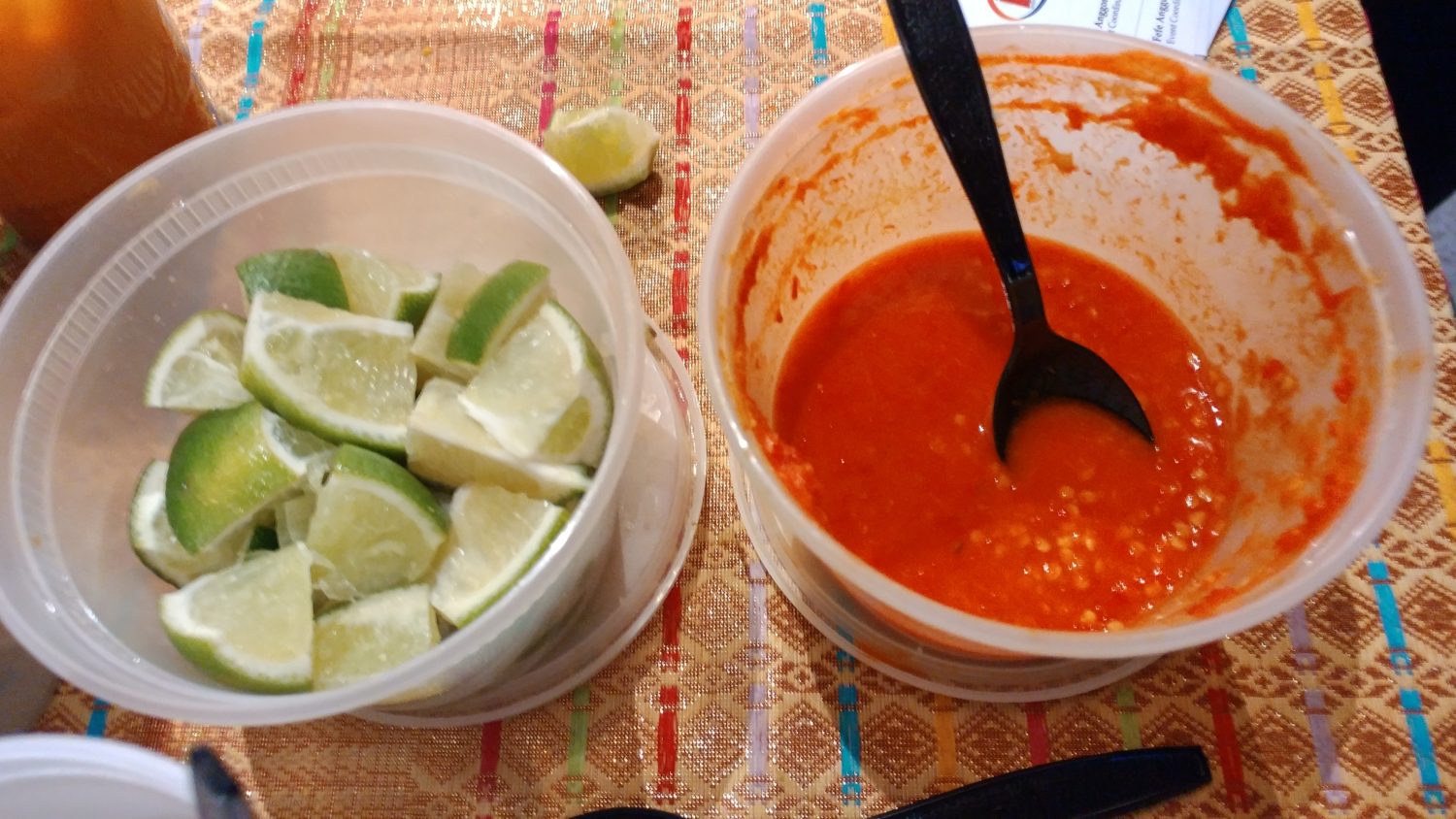MOFAD Explores an Overlooked Cuisine that Feeds the Multitudes
Indonesia, and its central island of Java, is the answer to many a great trivia question. What is the world’s fourth largest nation? Which nation on our planet speaks the most languages? What country is home to the world’s largest Buddhist temple? Which country has the most active volcanoes in the world? What is the world’s largest Muslim country? Second larges city? Most crowded and populous island? In order, the answers are Indonesia (241 million folks), Indonesia (800 languages), Indonesia (Borobudur, in Yogyakarta), Indonesia (79 active volcanoes), Indonesia (12.7% of the world’s Muslim population), Jakarta (30+ million), and Java (141 million, or 1,200 persons per square mile).
Beyond these statistical snapshots, however, Indonesia remains an obscure giant. Consider, for example, the relative dearth of Indonesian restaurants in NYC, as compared to those of its neighbors, the Philippines, Malaysia, and — of course — Thailand. Indonesian food is still a novelty on NYC’s culinary landscape, where the city’s best-known Indonesian restaurant, Selamat Pagi in Greenpoint, was in fact founded by trio of Australian ice-cream magnates, and boasts an executive chef named “Mateusz.” Suffice to say, Indonesian food appears ready for its close up.

This close-up was provided last week by the good folks at Williamsburg’s Museum of Food and Drink (MOFAD). A spry young museum, founded in 2005, MOFAD has been hosting events and exhibits in its 5000 square-food “MOFAD LAB” on the Southern fringe of McCarren Park since 2015. This past Friday, in collaboration with the Indonesian Consulate General and the Indonesia Food Bazaar, MOFAD staged their take on the Pasar Malam, or Indonesian Night Market. Featuring a dozen Indonesian food purveyors, from as near as Brooklyn, and as far as Philadelphia, the Indonesian Night Market offered guests a chance to sample a cross-section of that nation’s cuisine.
It should come as no surprise that cramming 141 million people onto an island the size of North Carolina requires a few culinary tricks. The first is, of course, rice. Indonesian cuisine, like most Asian cuisines, is erected around the tent pole of rice. Known as “nasi” in Indonesian, rice is presented in a dizzying array of forms, beyond the staple steamed accompaniment. A favorite is Nasi Rames, which translates to “Busy Rice,” and consists of rice with all sorts of accompaniments, including bits of desiccated meat, egg, vegetables, and the ubiquitous tofu. At Friday’s gathering, the Nasi Rames was represented in its “evolved” form, as Nasi Tumpeng. A staple of Indonesian parties, Tumpeng presents a cone of yellow, turmeric-scented rice surrounded by a half dozen side dishes. Here, it was given the Surabaya treatment, served up by chef Irza Hajati of Pecel Ndeso Catering from Philadelphia. And it was delicious.

Another staple of Indonesian cuisine is tempeh, tofu’s punk-rock cousin. An amalgam of fermented soybeans and a fine white mycelium fungus, tempeh hails from Java, where it shows up in a huge array of dishes such as Karedok, which is a fried tempeh salad with sprouts, onions, and a sweet and spicy vinegar marinade. Also delicious.
Peanuts are another common Javanese ingredient. The gift of the Portuguese in the 17th century, peanuts reach their apotheosis in Indonesian cuisine in the form of bumbu kacang, or spicy peanut sauce. The indispensable accompaniment to saté, bumbu kacang also finds its way into salads, curries, and desserts. Here, the sauce accompanied some toothsome fishcakes, Siomay Bandung, the creation of the lovely Ibu Marti, at Warung Bu Marti. Hailing from the Javanese mountain town of Bandung, Marti also served up a lovely turmeric-laden sweet tea that hit the spot.

Another ingredient that shines in Indonesian cookery is hot peppers. In fact, the only food I have ever feared was an Indonesian chili so fierce that, if I ever see one again, I will cross to the other side of the street. At MOFAD, event coordinator Fefe Anggono managed to sneak some of this culinary napalm into her otherwise innocent-looking soto ayam (chicken soup). A spoonful of this rocket fuel was enough to lay a gourmand low for a good 20 minutes.

Finally, it must be mentioned that Indonesia is a world-class consumer of sweetened condensed milk. Most often found in the myriad of sweet drinks that are the treasury of Indonesian street vending, the staple here was found in a surprising white drink with green tapioca pearls slopping around at the bottom. Delicious, if visually startling, this drink begs for a hot NYC day and a street cart, just like they have in Jakarta.
In the end, Indonesian cuisine suits a diet for a small planet. With pork consumption constrained by religious morals, and land-intensive beef being out of reach of all but the moneyed classes, tofu, rice, peanuts, and the occasional chicken do much of the heavy-protien lifting, while vegetables — excellent, diverse, grown in Java’s rich volcanic soils — provide the color. And hey: if it’s good enough for 140 million folks, it’s good enough for us.
The next Indonesian Food Bazaar is scheduled for February 17th at the St. James Parish House in Elmhurst, featuring the vendors profiled above and many more. Click here for more information.



